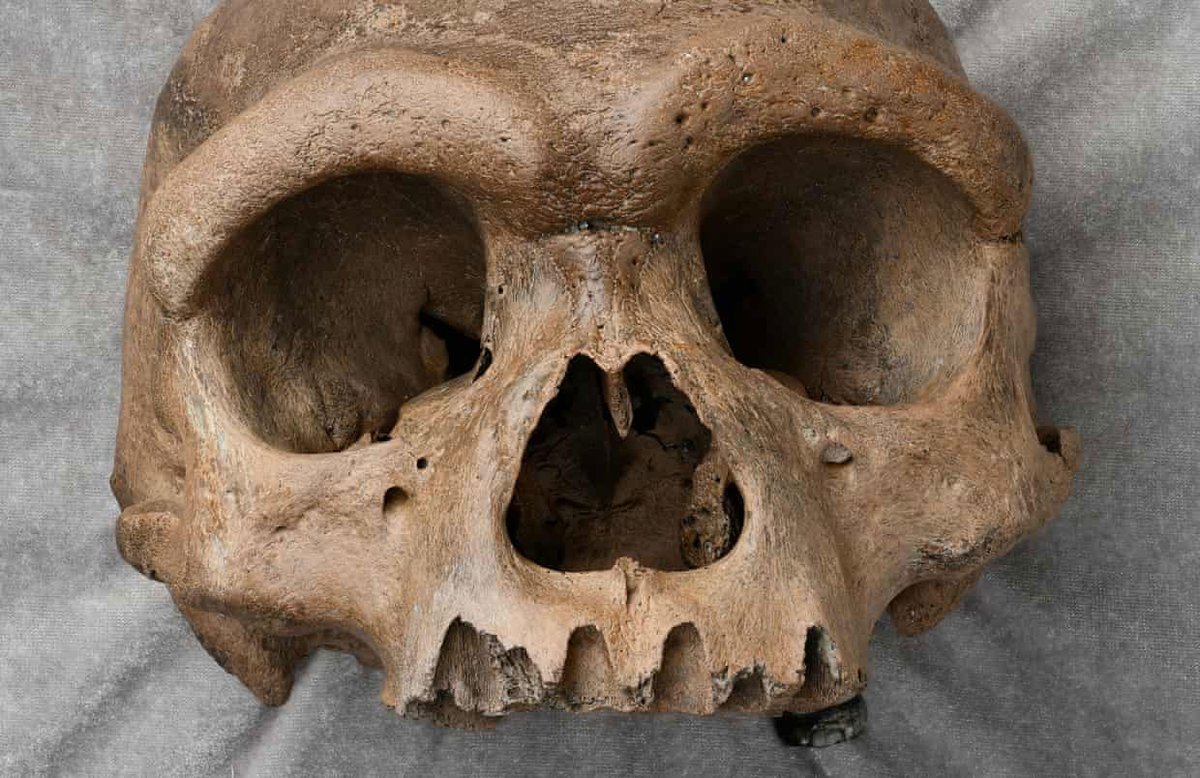From the Middle Awash of Ethiopia, BOU-VP 16/1 is one of three skulls from the Herto area. The best estimate of its age is 165,000 years old, and its describers called it Homo sapiens idaltu. #inktober twenty-ninth 

It’s pretty common for anthropologists to call this Herto specimen “anatomically modern”, or “early modern”, or “near modern.” These terms reflect assumptions about the process of evolution.
How does the skull fit in? There is no direct archaeological association. Nearby stone tools from around the same time include some of the latest Acheulean handaxes. A child’s skull from nearby has a polished surface, as if it were kept and handled often.
• • •
Missing some Tweet in this thread? You can try to
force a refresh














